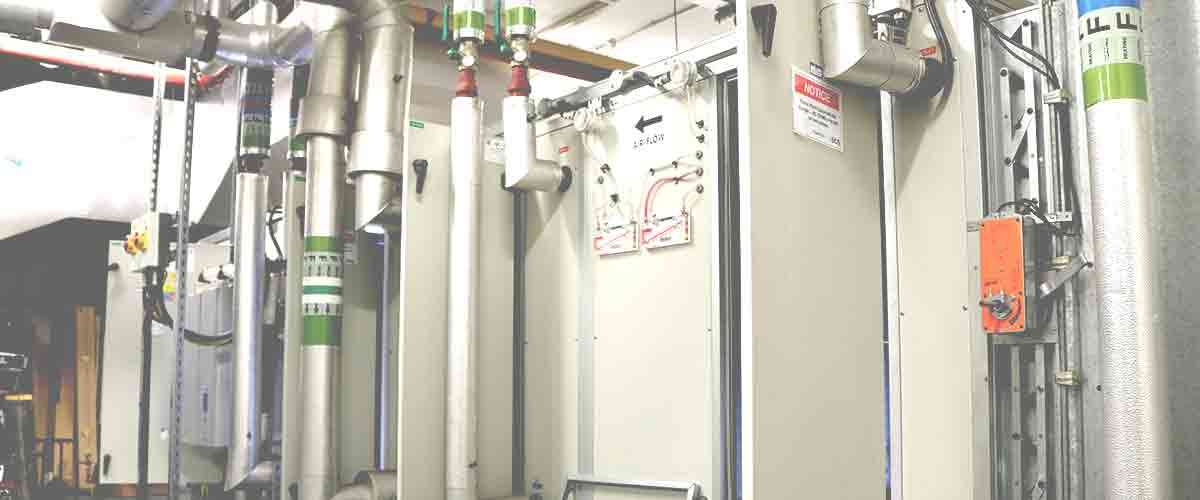
Air Handling Unit Maintenance
Here at ECS, our experienced engineers are specialised in the practice of Air Handling Unit Maintenance. Air Handling Units (AHU’s) supply fresh air into buildings. During operation, an Air Handling Unit draws in huge amounts of outdoor pollutants, therefore filters need replacing and coil chambers need cleaning every three months to stay on top of the cleanliness. In line with each coil, there are a series of panel filters and bag filters that are available in various grades of filtration to suit the design. The cooling coil will sweat dew point condensation – as all cooled heat exchangers do. Greater duty requirements in built-up city areas will increase the dirt and bacteria build-up. This poses an increased risk of serious breakouts of legionella bacteria. Therefore, Air Handling Unit Maintenance needs to be a critical item, for building management planned preventative maintenance works.
AHU BMS control
Air handlers require typical mechanical methods to control them, which link back to a control panel or a BMS system. Failure to set the BMS up correctly will cause the loss of running efficiency to occur and operation costs will be greatly increased. The cooling and heating coils running simultaneously as well as calling for an unnecessary humidity top-up. Just a few of the commissioning faults identified by our engineers during Chilled Water Balancing work on AHU’s.
Providing better air quality increases productivity…FACT!
Improved air quality, increased CO2 levels and removal of allergy pollutants, will improve the well being of the building occupants. In one study ran by our client, they found that 6 months after their ventilation maintenance the overall staff sickness leave had dramatically reduced. The CO2 levels recorded in the building had greatly increased and excessive humidity levels dropped. The neglect of maintenance on the building had left staff members surrounded in seriously oxygen deprived, bacteria-filled air.
Watch the video below for more details of our engineers performing the Air Handling Unit Maintenance works on this commercial site.
Basement Ventilation
When it comes to basement ventilation, underground environments, in particular, need careful consideration during the ventilation design stage. It is therefore important that the original AHU M&E design was managed by qualified professionals that implement building regs.
ECS offers Full HVAC M&E design services from our consultancy team.
Finally, occupied underground basement environments can be extremely toxic! However good structural waterproofing and tanking design will ensure ingress underground water and dew point condensation are rejected to waste. A waterproofing membrane attached to block work creates a vapour barrier that traps this moisture outside of the rooms dries lined space. In addition, an MVHR (mechanical ventilation heat recovery) system, very much a mini air handler will maintain the space. The MVHR system will supply fresh air while simultaneously extracting the stale moist air across a heat recovery core. The heat recovery core sits in the duct line of both sealed air streams meaning the fresh air receives a mild preheat solution on entering the room.
This demonstrates that ventilation and original building design go hand in hand in creating a healthy indoor environment.
Want to find out more about our Air Handling Unit maintenance services in London?
Contact us today to speak with our team of professionals!
